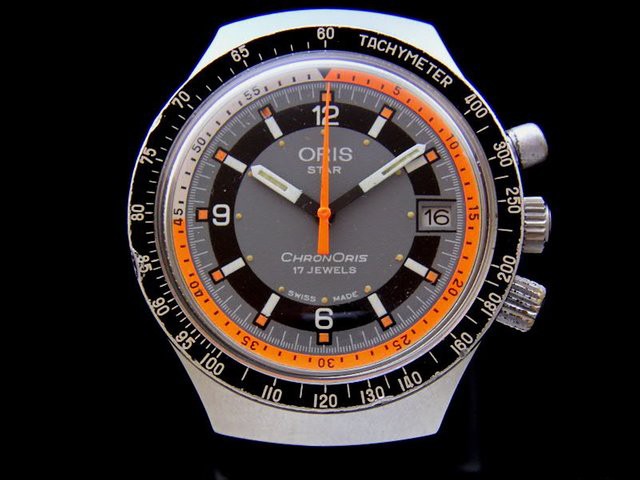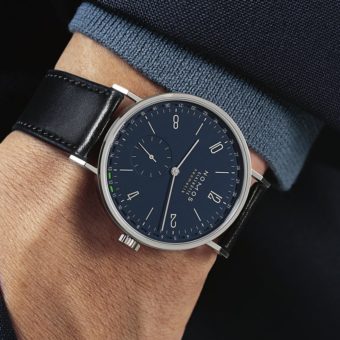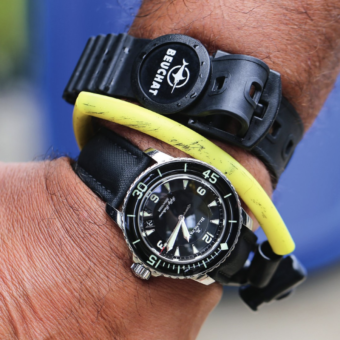With this said, the brand has kept creating, and in the wake of the Diver Sixty-Five has been steadily releasing new vintage-inspired pieces each year. In 2017, one of these watches was the ChronOris Date (below), a fascinating piece based on a 1970 stop-seconds chronograph with a similar name (it was simply the ChronOris, vintage model pictured above). The vintage piece was the very first chronograph produced by the brand all those years ago, with a design that could not have been born in any time but the 1970s. With a tonneau (“tortoise shell”) case, orange, white, and black accents, rotating inner seconds bezel, and 60-second chronograph, the watch was weird yet very representative of 1970s horology.

The new ChronOris echoes this era, but does so in a way that is distinguishably crisp. The watch uses a 39-mm tonneau case with sloping, radially brushed edges and polished sides, featuring a non-screw-down crown at the 2 o’clock position for time adjustment, and a screw-down crown at 4 o’clock used to rotate the internal bezel. The dial comes in two different color schemes, differing only in one’s use of an all-black design and the other hosting a mostly gray design using a large black ring outlining the center sector; both feature orange accents throughout. The rest of the details are the same, with an inner rotating bezel which satisfyingly clicks for each turn it makes (for a total of 120 times), an outer minute track just inside of it with printed SuperLuminova-filled hour marks, and an outlined date indicator at 3 o’clock.

In the center of the dial is a large Oris corporate logo toward the top and “ChronOris/26 jewels” toward the bottom. The dial has white, baton-shaped, SuperLuminova-filled hour and minute hands, and a chronograph-inspired orange seconds hand; the hands are powered by the automatic Oris 733 movement, which uses a Sellita SW 200-1 base caliber and holds a 38-hour power reserve. The ChronOris is currently listed by the brand at $1,750.
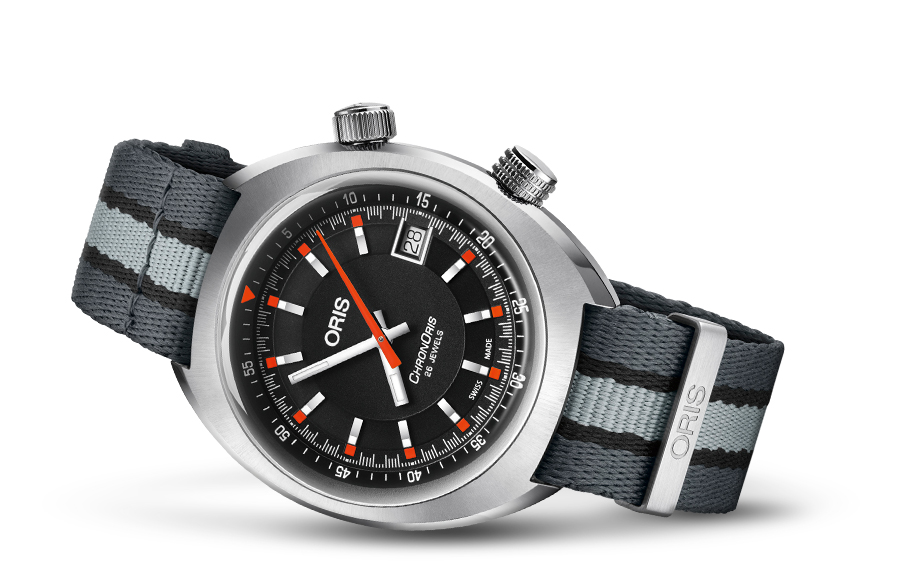
The differences between the modern ChronOris Date and the vintage model are many. The original watch distinguished itself as the brand’s first chronograph, and was outfitted with a tachymeter, single-pump pusher on its side, and a thick movement inside to power the multifunctional mechanism. In contrast, the modern variation has done away with the 60-seconds timer and its pusher (while keeping the chronograph-style seconds hand) and also removed the tachymetric scale to ensure a cleaner look throughout the watch. The color schemes for both of the modern pieces are also quite different: while the black dial model does stay consistent with the original, it lacks the vintage-style white and orange inner rotating bezel to complete the look. And while the gray-dial model is quite handsome and seems to channel the funky influences of the 1970s, the original ChronOris did not come in this color scheme. A few more subtle changes are seen in the vintage model’s sword hands compared to modern one’s baton hands, the small applied markers on the historic model compared to the contemporary watch’s printed ones, and in the differently positioned crowns, each quite modernized in their design.

However, for all the differences, the modern watch still obviously evokes the era from which it draws its design, and retains many critical features found on its predecessor. Notably, the 39-mm tonneau case is virtually identical to the original with the exception of the finishing; the inner bezel remains a prominent feature, as does the black and orange accenting; and the chronograph seconds hand— although it lacks its old function—has the same design. The brand took an obvious effort to channel the general ethos of the original watch, and with the exception of the chronograph function kept all of the key elements.
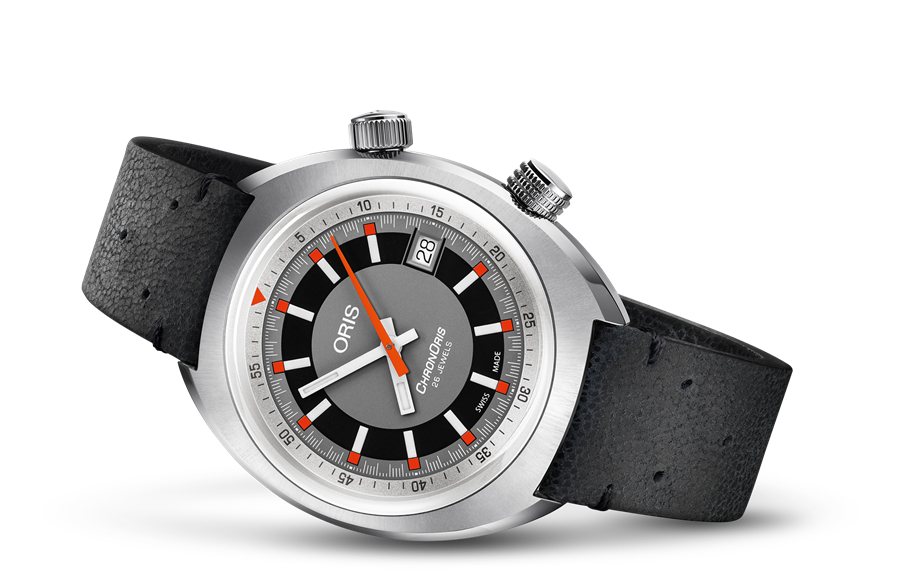
The modern ChronOris, like the Diver Sixty-Five that preceded it in this era of vintage revival, is less “historically accurate” as “loosely historically inspired.” The original piece from the 1970s helped the brand find a foot in the door in motorsport watches, but that it was clunky, crowded, and somewhat limited in functionality are traits plain to see. It was thus to Oris’s credit that it re-crafted the model with a fair amount of ‘70s flair but incorporated into a design that will outlast the decade. The ChronOris now reminds me quite a bit of another 1970s 60-second chronograph, the Omega Chronostop (pictured below) — a piece that, like the original ChronOris, was geared toward young motorsport drivers and which remains today a clean, relatively cheap, and funky chronograph in Omega’s often stately collection of watches. Nonetheless, the Oris ChronOris is distinctive in its own right, and with its style and price represents a good value for any watch lover looking for something unlikely to be spotted too often on another’s wrist.
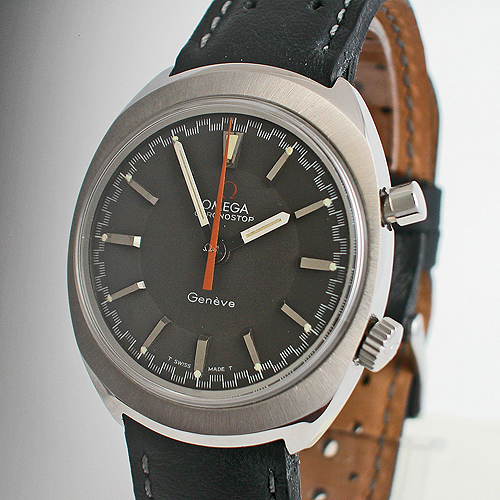
For the most recent article in the “Vintage Eye” series, in which we compare the Mido Vintage Multifort Datometer Limited Edition to its historical predecessor, click here.
Caleb Anderson is a freelance writer with a primary focus on vintage watches. Since first learning about horology, he has garnered extensive knowledge in the field and spends much of his time sharing his opinions among other writers, collectors, and dealers. Currently located near New York City, he is a persistent student in all things historical, a writer on many topics, and a casual runner.

